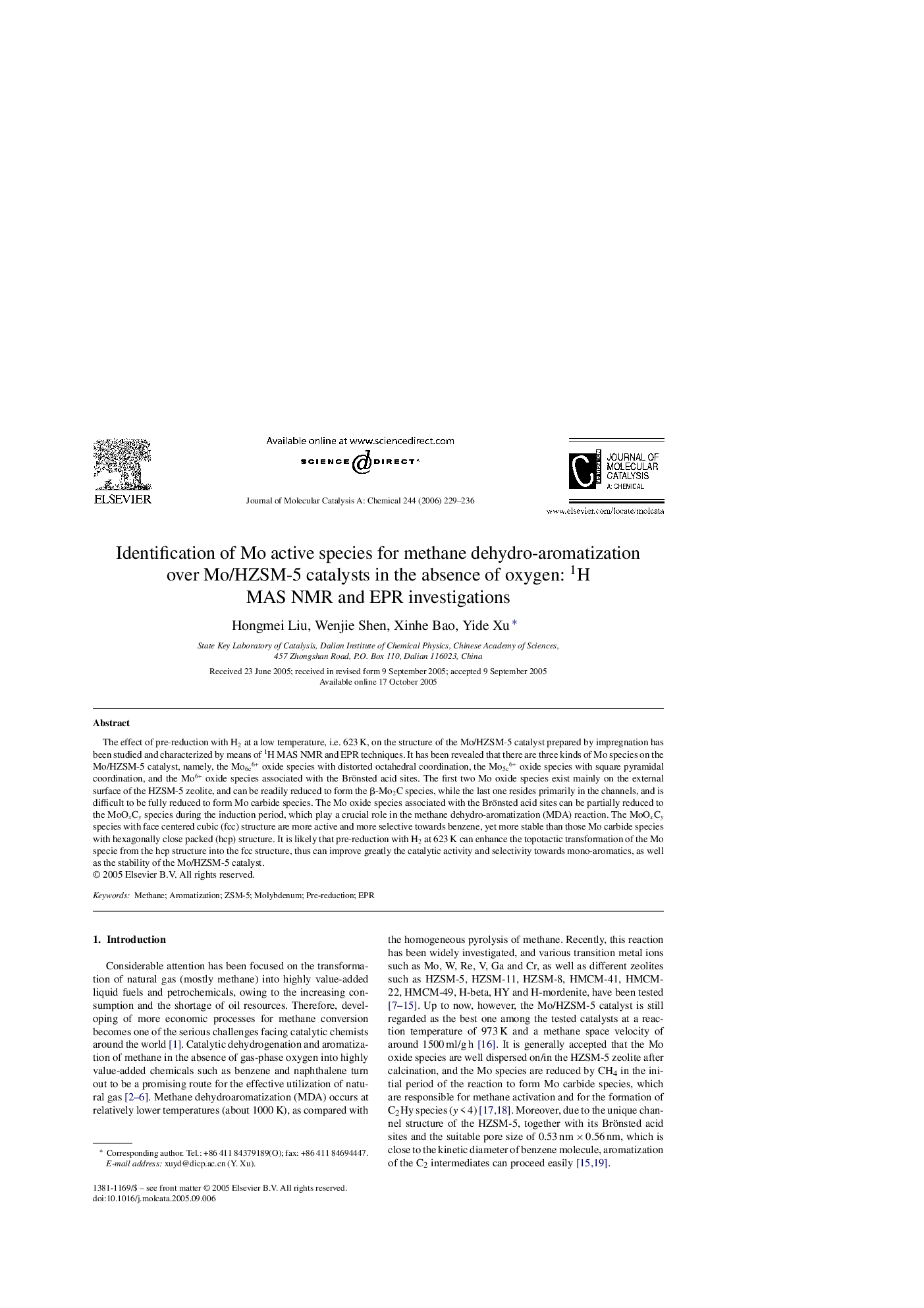| Article ID | Journal | Published Year | Pages | File Type |
|---|---|---|---|---|
| 69116 | Journal of Molecular Catalysis A: Chemical | 2006 | 8 Pages |
The effect of pre-reduction with H2 at a low temperature, i.e. 623 K, on the structure of the Mo/HZSM-5 catalyst prepared by impregnation has been studied and characterized by means of 1H MAS NMR and EPR techniques. It has been revealed that there are three kinds of Mo species on the Mo/HZSM-5 catalyst, namely, the Mo6c6+ oxide species with distorted octahedral coordination, the Mo5c6+ oxide species with square pyramidal coordination, and the Mo6+ oxide species associated with the Brönsted acid sites. The first two Mo oxide species exist mainly on the external surface of the HZSM-5 zeolite, and can be readily reduced to form the β-Mo2C species, while the last one resides primarily in the channels, and is difficult to be fully reduced to form Mo carbide species. The Mo oxide species associated with the Brönsted acid sites can be partially reduced to the MoOxCy species during the induction period, which play a crucial role in the methane dehydro-aromatization (MDA) reaction. The MoOxCy species with face centered cubic (fcc) structure are more active and more selective towards benzene, yet more stable than those Mo carbide species with hexagonally close packed (hcp) structure. It is likely that pre-reduction with H2 at 623 K can enhance the topotactic transformation of the Mo specie from the hcp structure into the fcc structure, thus can improve greatly the catalytic activity and selectivity towards mono-aromatics, as well as the stability of the Mo/HZSM-5 catalyst.
Graphical abstractThe Mo oxide species associated with the Brönsted acid sites of HZSM-5 zeolite can be partially reduced to the MoOxCy species during the induction period, which play a crucial role in methane dehydro-aromatization. Pre-reduction with H2 at 623 K can enhance the topotactic transformation of the Mo specie from hexagonally close packed (hcp) structure into face centered cubic (fcc) structure, thus can improve greatly the catalytic activity and stability of the Mo/HZSM-5 catalyst. Figure optionsDownload full-size imageDownload as PowerPoint slide
